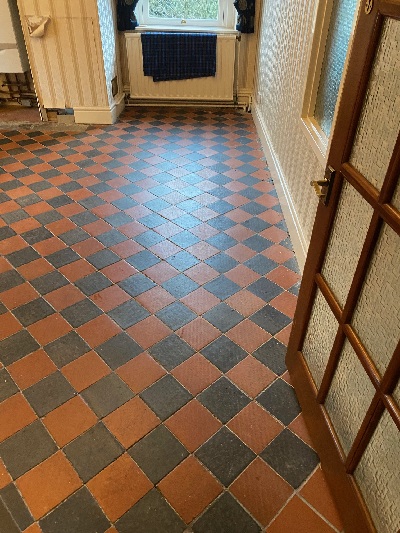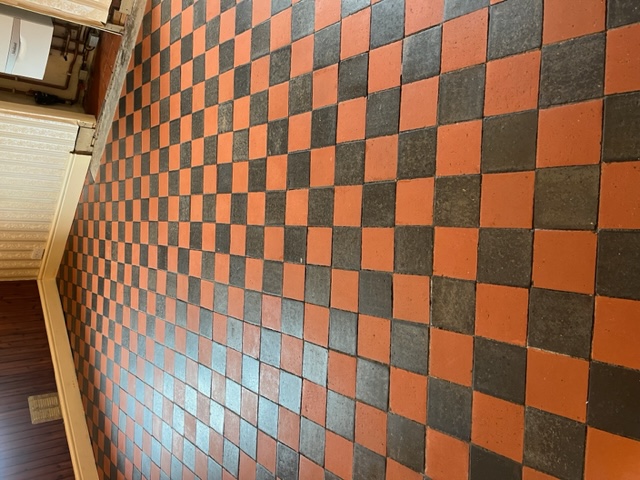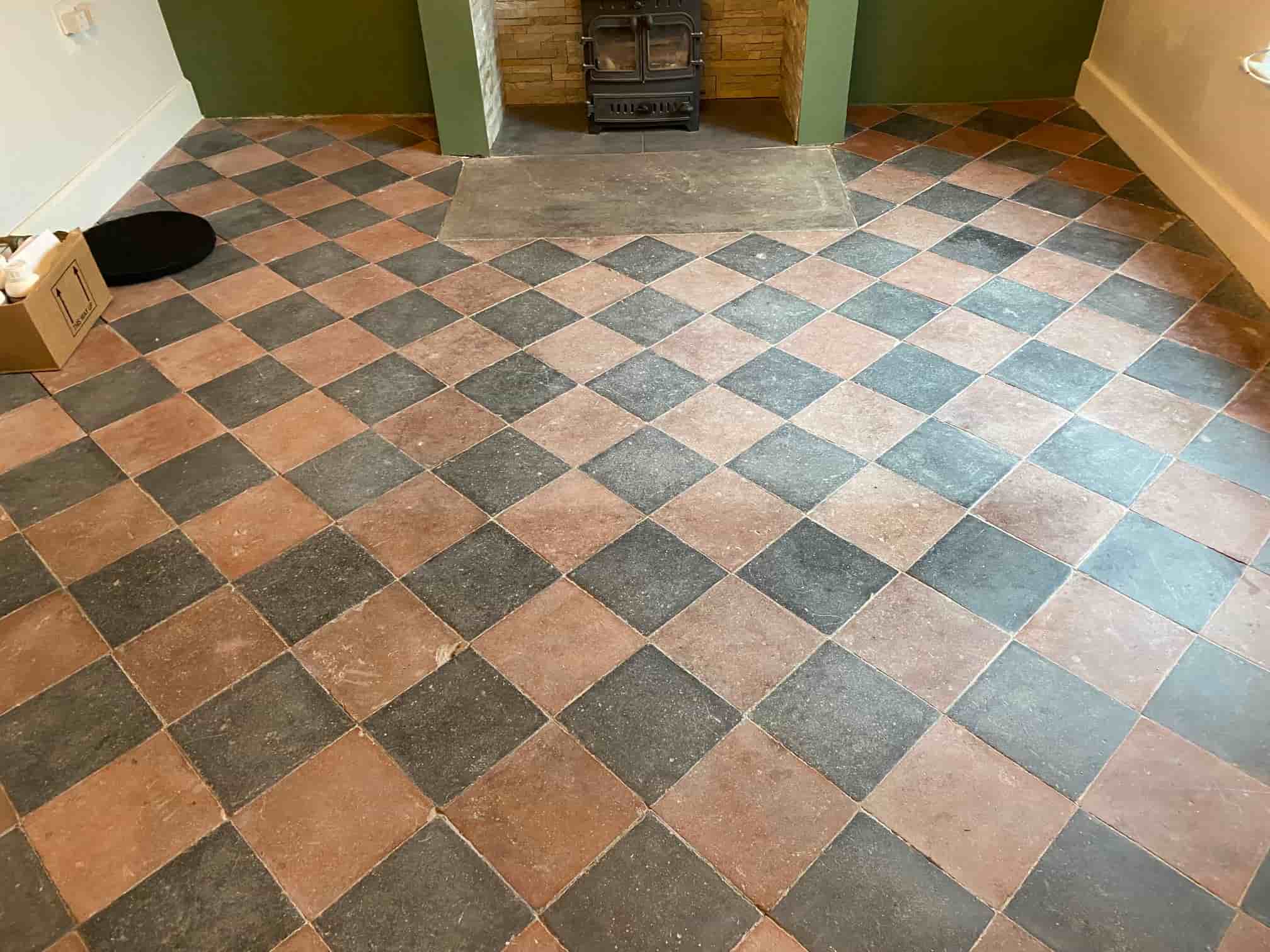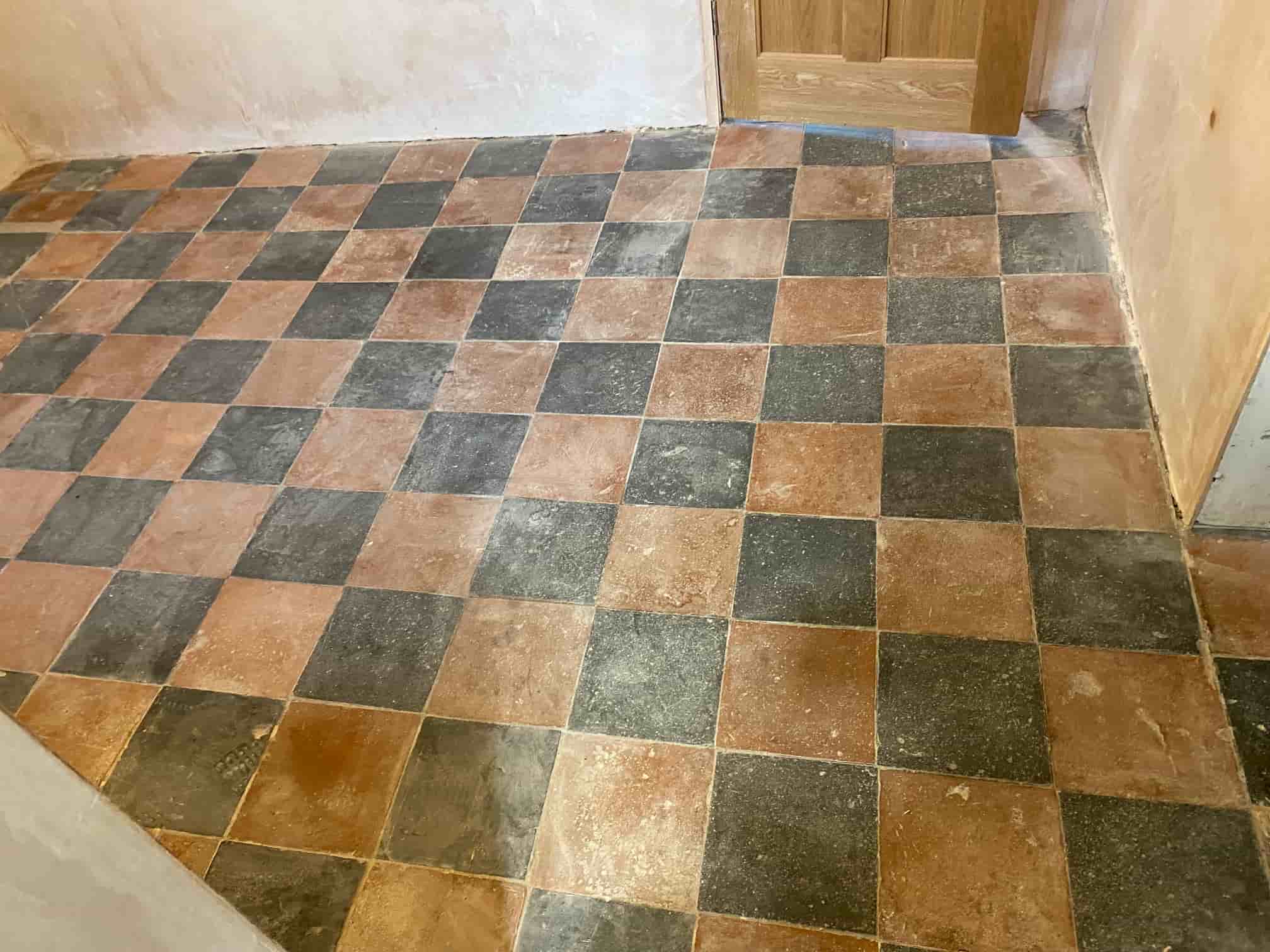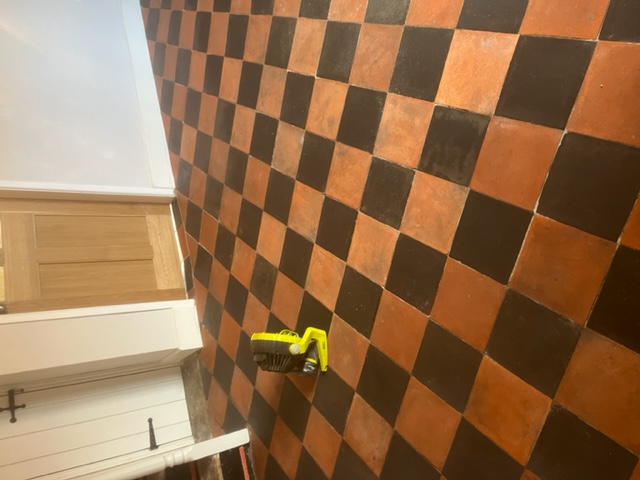Dorchester Pattern Victorian Tiled Hallway Floor Restoration in Lancaster
This is a Red and Black Victorian tiled floor laid in a Dorchester pattern at a property in Lancaster. The owner has only just bought the property which dates to the 1890s and this floor had previously been covered in carpet which had started to smell and leave a pungent aroma in the air.

Once the carpet had been removed and the Victorian floor allowed to breathe and dry out the smell disappeared. This is the right course of action with old floors which were laid without a damp proof membrane, floors of this age need to breathe and allow moisture to rise through the tile and evaporate at the surface, carpets and underlay prevent this.

The damp issues had resulted in efflorescent salts being deposited on the surface of some of the tiles and this is an important consideration when cleaning the floor. Salts and damp go together, so the more water we use the more salts will come through after the floor has been cleaned. Additionally using an alkaline cleaner such as Tile Doctor Pro Clean or Remove and Go this will further increase the alkalinity of the floor and cause yet more salt issues so a different approach is required.
Cleaning a Victorian Tiled Hallway Floor
Naturally I didn’t want to exacerbate the moisture problems by using liquid products to clean the floor, so I used a low, moisture cleaning technique. This involves applying Tile Doctor Acid Gel as the main cleaning agent and working it in with a 200-grit milling pad fitted to a rotary machine. The gel keeps the moisture level low, and it is a very effective cleaning product and being an acid will neutralise the salts in the floor and keep the pH level at the correct balance. Once done the floor was briefly rinsed with water and all the soils extracted with a wet vacuum.
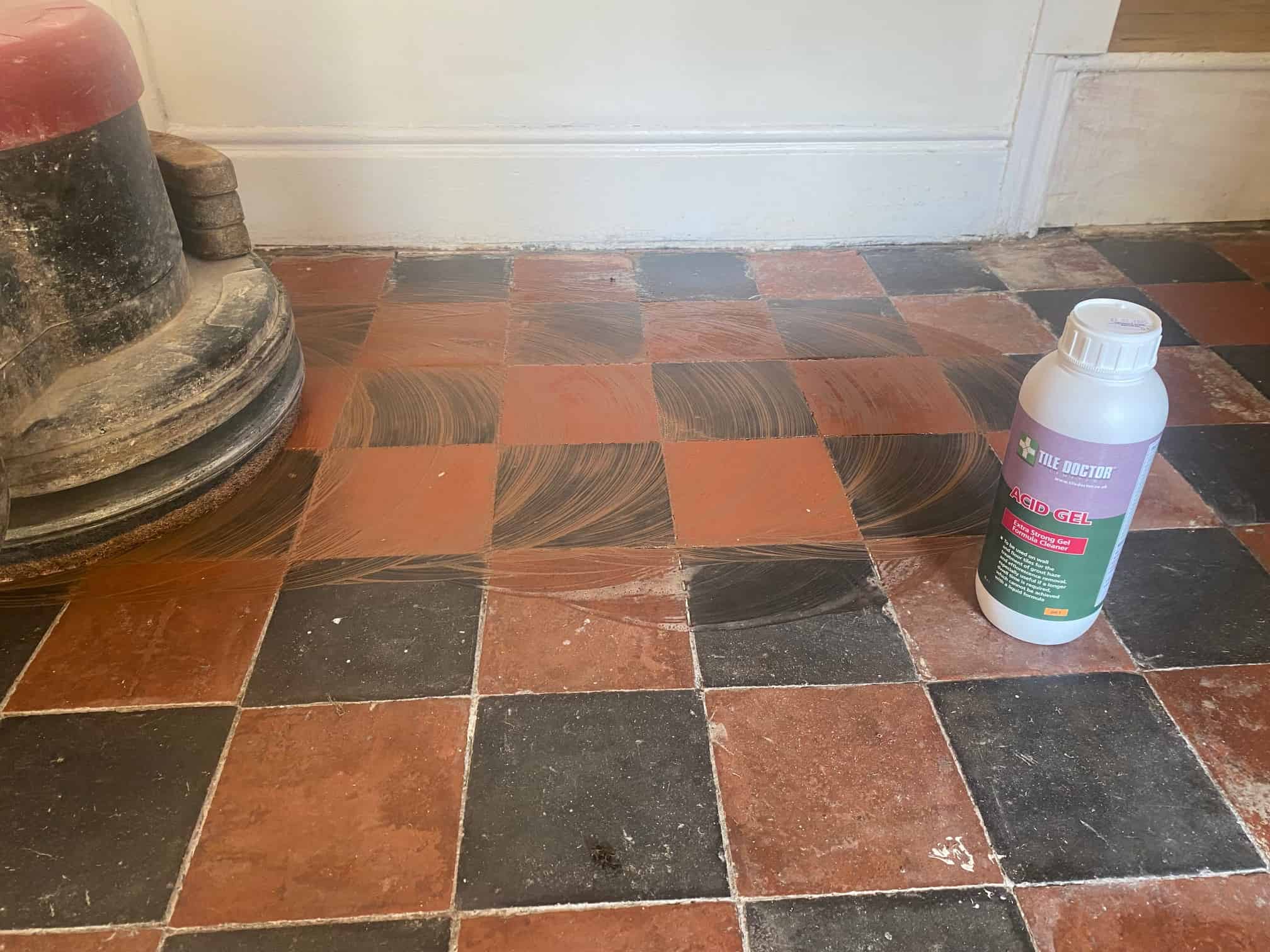
The floor was left to dry off overnight then I called back the following day to see how it had faired. There were some areas where efflorescent salts had appeared, so I spot treated these areas with more Acid Gel and then scrubbed and rinsed with water using the wet vacuum again to remove as much moisture as possible. You will see on the photos how soft the salt was and I was able to scrape it off without too much difficulty, however if left untreated this salt would harden into a crystalline structure and become more difficult to remove.

Sealing a Victorian Tiled Hallway Floor
To make sure the sealer would cope with the damp floor I applied a thin coat of Tile Doctor X-Tra Seal to several areas before leaving. The decision on which type of sealer to apply was influenced by the damp issues as the moisture needs to be able to evaporate at the surface, so it is important to select a fully breathable sealer.

I called back the following day and the floor was more settled, and the sealer had fully cured, the client gave his thumbs up and we continued sealing the floor with one coat of Tile Doctor X-Tra Seal which is fully breathable.

Once completed the floor was transformed and worked well with other period features in the property. For aftercare cleaning I recommended the use of a Neutral PH cleaning product such as Tile Doctor Neutral Clean.
Professional Restoration of a Victorian Tiled Hallway in Lancashire
Dorchester Pattern Victorian Tiled Hallway Floor Restoration in Lancaster Read More »



